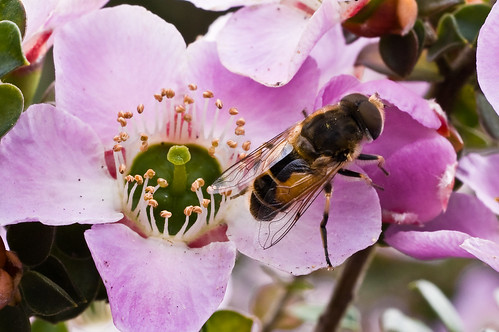“A small word”. “Macro”. Get it? Ok, bad jokes aside, the title is accurate because here is that small word to describe macro: hard.
Having purchased a dedicated manual focus macro lens for my D40, I am still trying to take a decent macro shot with it. I’ve seen heard countless praises for the sharpness and image quality the 55mm f3.5 Micro-Nikkor Pre-AI lens is known to produce. And I’ve seen plenty of great images on Flickr that are proof of this. And yet, after hundreds of shots, I still can’t get that perfect macro shot?
Do I have a defective lens? Probably not. Like most photography problems, the first response is to blame the equipment. But most of the time, the actual culprit is the person behind the camera. But before I’m proven guilty, I’d like to at least give some clarifications regarding the obstacles of macro we all had to face. It’s no excuse for sloppy photography, but perhaps, it may warrant some sympathy?
- Manual focusing – This is one of those times where I wish my D40 had a split-prism focusing screen like the Katz-Eye. Manual focus is hard enough under normal circumstances, but when you’re trying to focus on a small insect buzzing around a flower at 1:2 magnification, that’s a whole different level of manual focusing. From what I’ve heard, macro photographers still need to manual focus on their autofocus lenses, so I’m not sure if continuous autofoucs technology will help much here. I don’t trust my eyes too much, so I depend a lot of the focus confirmation dot in the viewfinder. But the shallow depth of field due to the close subject distance causes that focus confirmation to be blinking constantly, and never locking on. So in the end, I just wing it, and focus bracket slightly by taking continuous shots with very slight adjustments on the focus ring. Spray n’ pray, so to speak.
- Depth of field – As I mentioned before, the close subject distance causes that depth of field to be thinner than a slice of prosciutto di parma (good stuff, by the way). The slightest hand movements can cause the subject to be out of focus. A tripod would definitely help here, but my $6 crappy tripod causes more shake than it helps to stabilize. A depth of field preview button would’ve been useful as well, so at least I’d know what’s in-focus in the frame. Forget about composition, I’m just trying get the subject in-foucs here!
- Exposure – To counteract that extreme depth of field, this means stopping down the aperture. We’re talking f16 or higher here if you want most of your subject in focus. But if that subject is also moving, we’re going to need a high shutter speed as well. At the minimum, I always follow the 1/focal length rule for hand-holding shutter speeds. (On digital, because of the cropped sensor, the new rule seems to be 1/ 2x focal length. With my shaky hands, I tend to follow this as much as I can.) With a small aperture, and fast (enough) shutter, something’s gotta give — time to jack up that ISO. In broad daylight, I find myself having to shoot in ISO 800 or even 1600. Nosie or no noise, better to get the image or not at all, right?
- Weather – WInd blows. No seriously, wind is the enemy of macro. Most of my time, I’m patiently standing or kneeling, waiting for the wind to die down so I can focus on my subject. By the time I got a decent focus, the wind picks up and I lose the shot. Back to waiting again. This is why it takes me a few hours of being in a single spot just to get a couple of decent shots.
Given those difficulties, my keep rate for macro is definitely pretty low. We’re talking about 4 decent shots out of a 100. Decent shots — nothing spectacular.
With that said, I got a bit of luck today with this little fella above. He was perfectly still the whole time, so I was able to lower my shutter to around 1/60 (lower than the suggested guidline, but you gotta do what you gotta do). Still had to shoot at ISO 800 or above to get the shot with f16 aperture on a overcast day. Wind was somewhat of a problem, but fortunately, there were moments of calm. Took about 30 shots of this guy, and this was the best of the bunch. In post-process, bumped up the contrast, sharpened a bit, and added a bit of vibrance and clarity to add some punch to the image. Getting better slowly, I guess…


 Posts
Posts